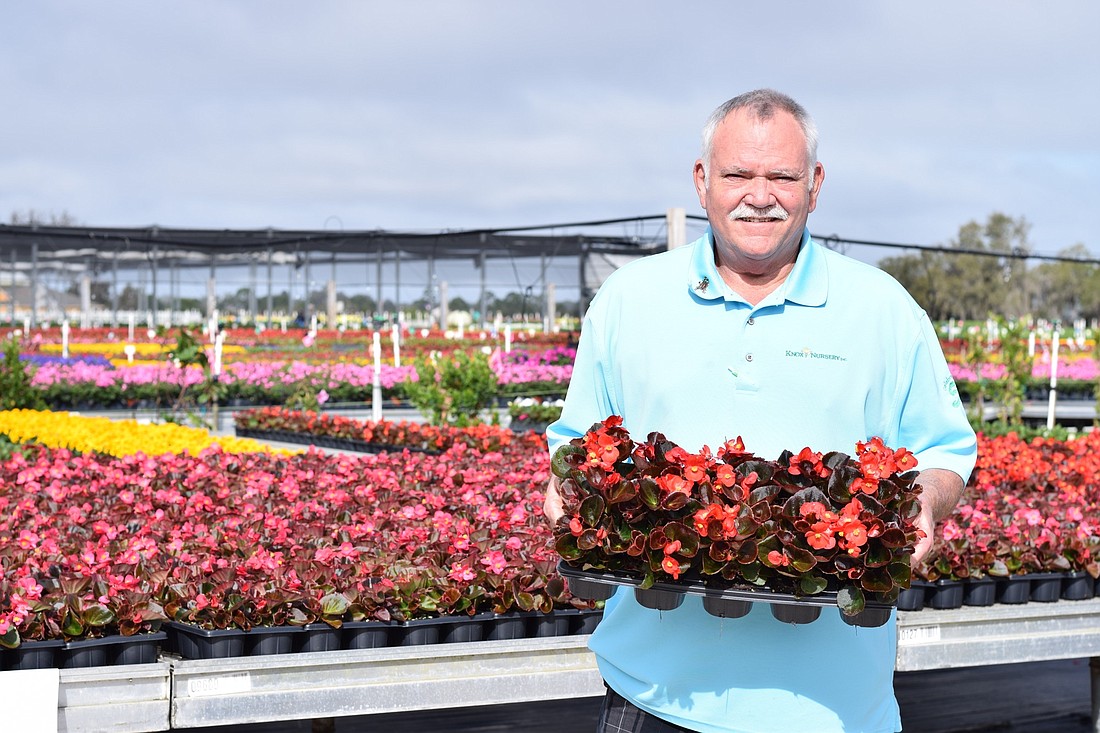- December 13, 2025
-
-
Loading

Loading

WINTER GARDEN The arrival of spring’s warm days and cool nights means it’s time to pull out the rakes, shovels and watering cans.
And whether you have a green thumb or can’t seem to keep a plant alive, successful gardening can be done by anyone who learns how to properly care for the colorful blooms they crave to see. With the proper soil, fertilization and consistent watering, growing and maintaining a beautiful and healthy garden is within reach.
SPRING TRENDS
Although garden centers like to switch up their plant offerings each season, wholesale nursery companies, such as Knox Nursery Inc. in Winter Garden, tend to stick with the demands of the landscapers they primarily serve.
For landscapers and wholesale customers, their needs cycle through each season, according to the desires of their clients and rigorous maintenance. Homeowners can typically get a little more time out of their plants.
David Donn, a salesman at Knox Nursery, said the edible-plant trend has made a comeback in recent years. Knox grows vegetable plugs — or seedlings — and ships them around the country, but it deals mainly with flowers.
Flowers such as marigolds, begonias and zinnias are some of the most popular springtime offerings. Each type grown at Knox will have at least four varieties, with varying leaf types and flower colors.
Another trend is what Donn calls the “English garden mix.” This is when landscapers plant all of those types of flowers and more in one bed, creating a full-looking mix of colorful flowers of all varieties.
“We go out and plant all those flowers in the same bed with no real rhyme or reason other than an equal dispersement,” he said. “Then the plants just grow, and you have flowers everywhere. The landscapers are using that a lot — if one plant doesn’t do well, the others take over.”
KNOW HOW TO GROW
Donn suggests starting and maintaining a garden with the right tools and organic matter. Soil makes all the difference, he said, but Florida soils are typically sandy. Although it is possible to grow things with them, it takes a few extra steps and more maintenance to keep the plants healthy and growing.
Donn suggests mixing whatever soil is being used with organic matter, such as Milorganite fertilizer, potting soil or cow manure. The soil also must be able to retain water. Sandy Florida soils typically allow water to permeate through, rather than retain it.
“Most homeowners just go out and dig a hole and plant something; they don’t turn the soil, and over time, that soil is compacted down,” Donn said. “You can take a hoe and rake and aerate the soil and fluff it up a bit. Take a layer of organic matter, put it on top and start working it in. You don’t want to just lay it down and plant — you have to mix it up.”
From there it’s a matter of whether the gardener is growing flowers or edibles. The fertilization is similar, as the plants don’t know what kind of food they’re getting — they’re just hungry. He suggests using a liquid fertilizer such as Miracle-Gro and keeping the plants watered consistently.
And although preparing the soil is important, it’s not necessarily a complete deal-breaker. Donn likens a plant’s needs to those of people — they can survive in many conditions as long as they have food and water.
“We can sleep in a nice house or a run-down house — just like a plant can be in good soil or bad soil, and we still survive if we’re given food or water,” he said. “You can put it in good soil, but if you don’t feed or water it, it’s irrelevant.”
Newly planted species need watering every day for the first six to 10 days to allow for roots to be established. Then, Donn said, the gardener can ease up to every other day or every third day, depending on the weather.
The most important task for gardeners is to keep track of is consistent feeding and watering. If they miss one or two waterings early on in the plant’s life, it affects its performance.
“Most of the time, when we have plant failures out in the field, it’s due to lack of water and fertilizer,” he said. “It’s usually not disease, or insects eating everything — you’ll have those issues too — but if you have good water-holding soil and you feed (the plants) regularly, you’ll have success.”
Contact Danielle Hendrix at [email protected].